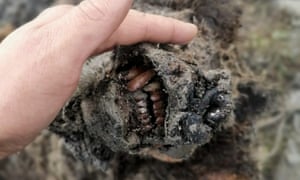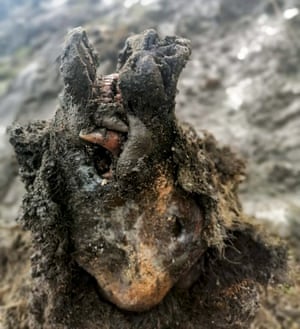Remains of ice age cave bear found preserved in Russian Arctic
Scientists estimate carcass is up to 39,500 years old and hail find as ‘groundbreaking’
Reindeer herders in a Russian Arctic archipelago have found an immaculately preserved carcass of an ice age cave bear, researchers announced on Monday.
The bear, revealed by the melting permafrost, was discovered on the Lyakhovsky Islands with its teeth and even its nose intact. Previously, scientists only had been able to discover the bones of cave bears, that became extinct 15,000 years ago.
Scientists of the North-Eastern Federal University in Yakutsk, the premier centre for research into woolly mammoths and other prehistoric species, hailed the find as groundbreaking.
In a statement issued by the university, researcher Lena Grigorieva emphasised that this was the first ever discovery of a complete cave bear carcass including soft tissues.
“It is completely preserved, with all internal organs in place, including even its nose,” Grigorieva said. “This find is of great importance for the whole world.”
A preliminary analysis indicated that the adult bear lived 22,000 to 39,500 years ago.
“It is necessary to carry out radiocarbon analysis to determine the precise age of the bear,” the university quoted researcher Maxim Cheprasov as saying.
The bear carcass was found by reindeer herders on Bolshoy Lyakhovsky Island, the largest of the Lyakhovsky Islands, which are part of the New Siberian Islands archipelago that lies between the Laptev Sea and the East Siberian Sea.
Recent years have seen major discoveries of mammoths, woolly rhinos, ice age foal, several puppies and cave lion cubs as the permafrost melts across vast areas in Russia’s region of Siberia.


No comments:
Post a Comment